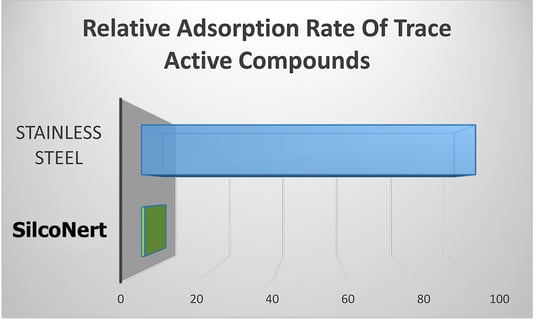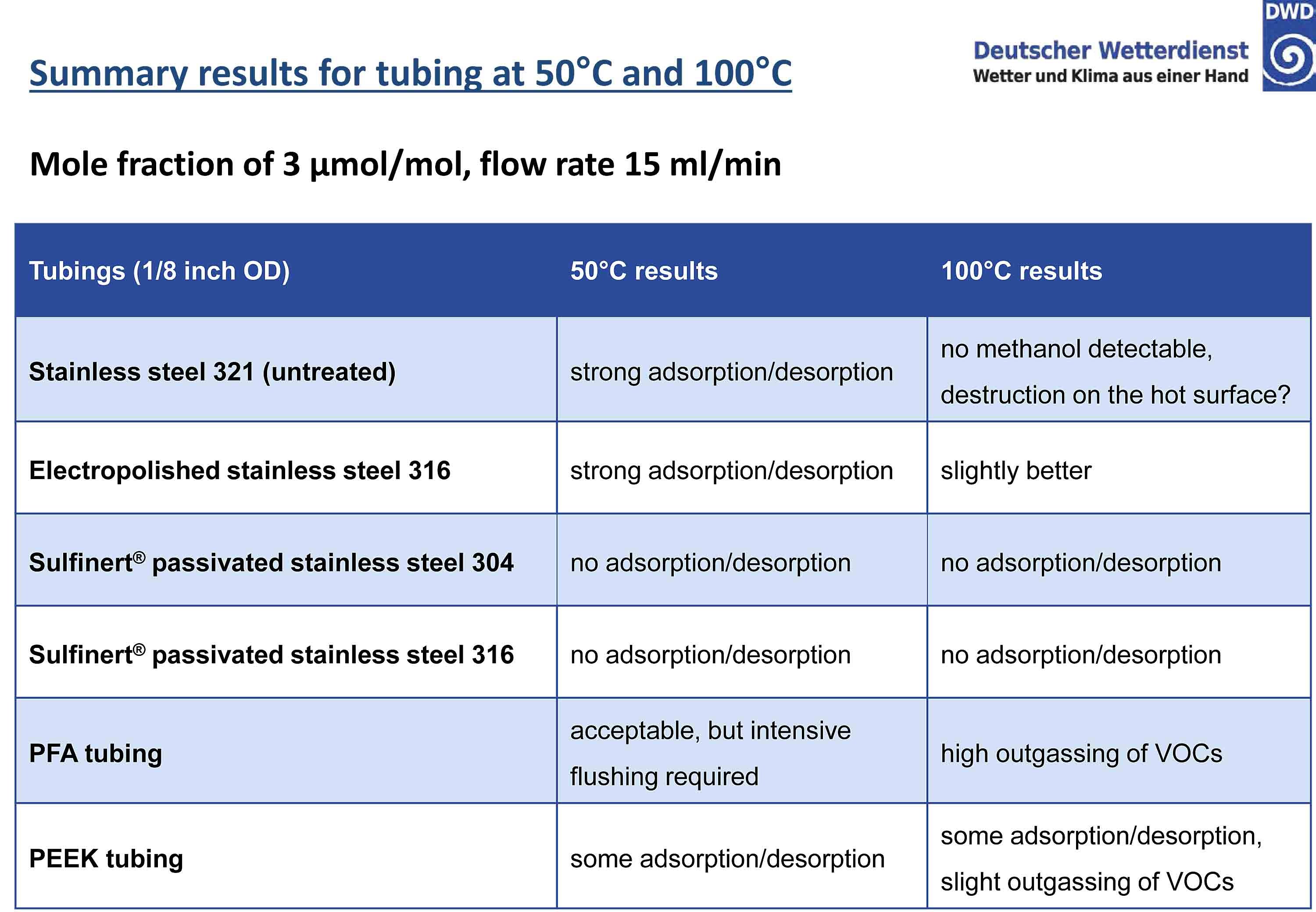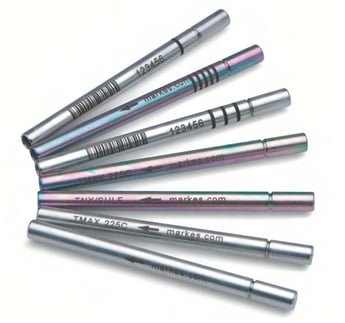
This blog post will explore recent developments in breath analysis including a newly developed FDA approved COVID test that relies completely on analyzing exhaled breath.
How Coatings Contribute to Advances in Breath Analysis
The analysis of breath has a long history, but it has largely been relegated to one specific type of test: the alcohol breathalyzer. Scientists and clinicians are starting to see the potential of utilizing breath analysis, largely through VOC analysis, for diagnostic and health purposes. This blog post will explore recent developments in breath analysis and how inert coatings contribute to improved VOC analysis.
|
In this blog post you will learn:
- How advancements in VOC analysis are leading to innovative diagnostic options in health care.
- How inert coatings and bio inert coatings help to improve analytical sensitivity
- How advances in analysis make testing VOCs possible.
|
Key words: VOC analysis, breath, SilcoNert® 2000, inertness, Mass spectrometry, COVID
Background
The most well-known breath test (beyond the hand over your mouth and nose to see if you need a stick of gum test) is the alcohol breathalyzer. The first mention of such a testing apparatus appears in a 1927 issue of Popular Science. The snippet is titled “Test a Trippler’s Breath” and it describes a new invention from W.D. McNally that will allow one to test an individual for “a single drink”. As an aside, the rest of the issue is full of interesting snippets such as electrocuting crops to make them grow faster, blueberries as a cure for diabetes, and a full article on why it will take 20 years for transatlantic commercial flights to become a reality. It only took 12 years.
Commercially, the first breathalyzer was available in 1931. The instrument, named “The Drunkometer”, worked by allowing alcohol from an individual’s breath to react with acidified potassium permanganate. There was little to no quantitation involved other than the more purple it turned, the more alcohol one had drank. As time progressed, the idea of utilizing exhaled breath to measure a person’s current health status spread. Linus Pauling published an article in the 1970s discussing how over 250 volatile organic compounds (VOCs) can be measured from breath utilizing gas chromatography.
As time moved forward, many others found the powerful insights that breath analysis could lend to one’s current health. A nice review article discussing the limitation and considerations that must be addressed when performing breath analysis for disease diagnostics can be found here. Some considerations include background effects (as many VOCs are endogenous), difficulties of storing breath collections, trace levels of potentially important VOCs that can be difficult to measure, as well as a host of other issues.
This blog post will discuss coatings and recent developments with breath analysis such as COVID-19 detection, exercise’s impact to VOC profiles, changes in VOC profiles due to sexual arousal, and a company called Owlstone Medical who is focused on developing diagnostic testing for various diseases utilizing breath analysis.

COVID-19 Detection
In the summer of 2021, Malcolm Gladwell released an episode of his podcast, Revisionist History, called “The Dog Will See You Now”. It discusses how dogs can often detect illness, explosives, drugs, and other items with a lower detection limit and with higher sensitivity than any modern instrumentation. Toward the end of the episode, a discussion revolved around the lives and money that could have been saved had dogs been trained to sniff out COVID-19 infection and dispatched to various areas around the country and the world. The idea was to send dogs that were trained to sniff out COVID to crowded areas such as schools, airports, restaurants and bars, etc. If detection was available early in the pandemic, many areas wouldn’t have needed to close the way they did. Rather, infected individuals would be found at the door and not permitted access to spread the disease to others. Inspect-IR took this idea and turned it into a device that can “sniff out” COVID-19.
In April of 2022, the FDA authorized the first COVID-19 diagnostic test using breath analysis. A video on how this device works can be found here. The device is a small gas chromatography-mass spectrometry (GC-MS) unit that analyzes five specific VOCs. According to the FDA and Inspect-IR documents, the five VOCs are of the ketone and aldehyde families. Through the FDA trial process, it was found that the product has a 91.2% sensitivity (number of COVID positive individuals show a positive result on the product) and 99.3% specificity (number of individuals without COVID that show negative results on the product).
The pending patent from Inspect-IR shows that the instrument (originally designed to detect cannabis use) operates by concentrating the VOCs from an individual’s breath in a carbon based sorbent such as a carbon molecular sieve or a Carboxen® coated mesh. The sorbent is then heated to release the VOCs to a GC-MS system. While it does not specifically describe any SilcoTek® coatings in the system, the ultra-inert SilcoNert® 2000 would likely have beneficial impact to the system in allowing trace levels of VOCs of importance to make it from the breath to the mass spec without non-specific adsorption to metal components.

Learn how SilcoTek® coatings can improve your analytical system performance.

Real-time VOC Analysis
Many diagnostic tests occupy both laboratory time as well as patient time to produce/collect the sample (typically blood, saliva, urine, etc.). Some analyses are better suited for real-time and non-invasive analysis. The real-time collection of VOCs (volatile organic compounds) which are directly transported to a mass spec is an attractive option. Three recent scientific publications have focused on this concept and reported their results. In each case, the transfer pathway of exhaled breath from the participant to the instrument (typically a mass spec) was coated by SilcoTek® to ensure the VOCs would be uninhibited in the flow path to the detector.
Comparative testing by the Dutch Metrology Institute (summary below) shows that SilcoNert® coated flow paths prevent adsorption and improve detection of VOCs.

 First, a publication in the Journal of Breath Research developed a system to monitor dairy cattle located in a waiting area prior to milking. Depending on the VOCs that were analyzed, the researchers were able to identify headcount, the presence of paratuberculosis (a chronic intestinal infection), cows that had just recently given birth, as well as make predictions about quantities of milk that would be produced in that round of milking. A more recent study, which has open access permissions, took a similar approach, but monitored individuals rather than entire crowds. Their work focused on the separation of the cow breath VOCs and background VOCs (a common issue upon reading these types of articles), but they plan to further their work in using it to identify respiratory and metabolic illnesses before they become an issue for the entire herd.
First, a publication in the Journal of Breath Research developed a system to monitor dairy cattle located in a waiting area prior to milking. Depending on the VOCs that were analyzed, the researchers were able to identify headcount, the presence of paratuberculosis (a chronic intestinal infection), cows that had just recently given birth, as well as make predictions about quantities of milk that would be produced in that round of milking. A more recent study, which has open access permissions, took a similar approach, but monitored individuals rather than entire crowds. Their work focused on the separation of the cow breath VOCs and background VOCs (a common issue upon reading these types of articles), but they plan to further their work in using it to identify respiratory and metabolic illnesses before they become an issue for the entire herd.
Another use for Real-time VOC analysis is in exercise analysis. A publication from 2021 attempted to utilize VOC analysis from exhaled breath to potentially replace blood testing to analyze shifts in metabolites in the body. During exercise, these VOC and metabolite shifts are largely due to a change in fatty acid oxidation, glycolysis, and the Krebs cycle. There are several unknowns regarding the efficiencies of exercise plans, the individual genetic makeup of a person that may lead to non-optimal exercise (or potentially harmful exercise for an individual), as well as how one’s diet may impact exercise efficiencies. This publication was successful in analyzing VOCs from exhaled breath and matching them quite well with what is typically done via blood draws from athletes after moderate exercise. The advantage of real-time and non-invasive analysis techniques may lead to useful analysis in monitoring disease, medication response, and changes in metabolic and physiological functions.
Finally, a recent paper in Nature shows that changes in the composition of VOCs from exhaled breath can change when watching various types of videos. They showed participants three different randomized videos meant to arouse the viewer in some way. The various arousal mechanisms were described as sports (positive-nonsexual), horror (negative-nonsexual) and erotic (sexual). Upon watching these sorts of videos, the body and mind turn on and off various metabolic and physiological mechanisms and the team was interested in measuring those pathways via the participant’s breath. The study found that the video type had little impact on acetone, methanol and octenol. These three are typically byproducts of digestive pathways, and since the participants were not consuming any drinks or beverages during the test, these VOCs steadily increased or decreased regardless of the visual stimulus. A dramatic decrease in isoprene and CO2 was measured when subjects were exposed to the sexually explicit video. These are both linked closely with blood flow and alveolar ventilation (gas exchange in the lungs) which makes sense considering blood flows to and pools in the genital region of humans when aroused. There are many other interesting and at time amusing details in this study such as a female participant that was primed with the sexually explicit clip who then became aroused at the end of the sport clip as the triumphant men of the soccer club began celebrating with one another. The overall experiment was considered a success and clinically could lend physicians insight into medical issues such as sexual dysfunctions and paraphilic disorders. The authors commented on their intent to perform further studies in combination with other equipment such as skin monitors for sweat and brain monitors.
Owlstone Medical: Breath Biopsy for Biomarker Research
As Benjamin Franklin once said, “An ounce of prevention is worth a pound of cure.” Yes, he was discussing fire outbreaks in the city of Philadelphia (better to prevent a fire than try to put one out), but when it comes to health the same can and should be applied. There has been a push in recent years to increase the amount of preventative medicine. One way that this might be achieved is evaluating the VOC mixture of exhaled breath for key patterns and ratios of compounds of interest. Owlstone Medical, a company in the United Kingdom, is doing just that.
The concept is relatively simple. A video here shows the process as performed at a physician’s office or at home. The breath is collected in the thermal desorption tubes shown in Figure 1. These thermal desorption tubes are commonly coated with SilcoNert 2000 to ensure that no VOCs are lost to the stainless-steel surface. When the VOCs enter the tube, they are trapped in the sorbent located inside and shipped to the lab for analysis. Upon heating the tube, the VOCs are then released into the instrument and typically detected via mass spec.

Figure 1 Thermal desorption tubes collect the VOCs and aerosols from the breath and trap them until they arrive at the lab for testing. Upon heating the tubes, the VOCs are released and available for detection.
Owlstone offers tests that can detect small intestinal bacterial overgrowth (SIBO) where there’s an abnormally large number of bacteria in a person’s small intestine. The excess methane produced from these bacteria can be detected via breath analysis. The excess of bacteria and methane gas often leads to discomfort, diarrhea, constipation, or other symptoms. They also have tests available for lactose or fructose intolerances that do not require blood draws. Owlstone also has a pipeline of other tests that are in development including lung cancer screening, liver disease, early-stage respiratory diseases such as COPD and asthma, additional digestive health issues such as intolerances to food, IBD, GORD, IBS, etc.
Conclusion
The analysis of VOCs from breath for clinical diagnostic is proving to be a useful tool. Currently, the biggest hurdle is separating background VOCs from exhaled VOCs. Once that is fully sorted, it is only a matter of time and experimentation to find meaningful correlations between VOC concentrations and ratios and a disease or exposure of interest. Here we explored a COVID-19 test, real time analysis of both livestock and humans, as well as a company that is making it their mission to bring breath testing to the forefront of medical technology, and the importance of sampling and analytical system inertness imparted by SilcoTek coatings.
Learn more about how SilcoTek® can improve your analytical system and products. Follow us on LinkedIn or subscribe to our blog.






 First, a
First, a 

